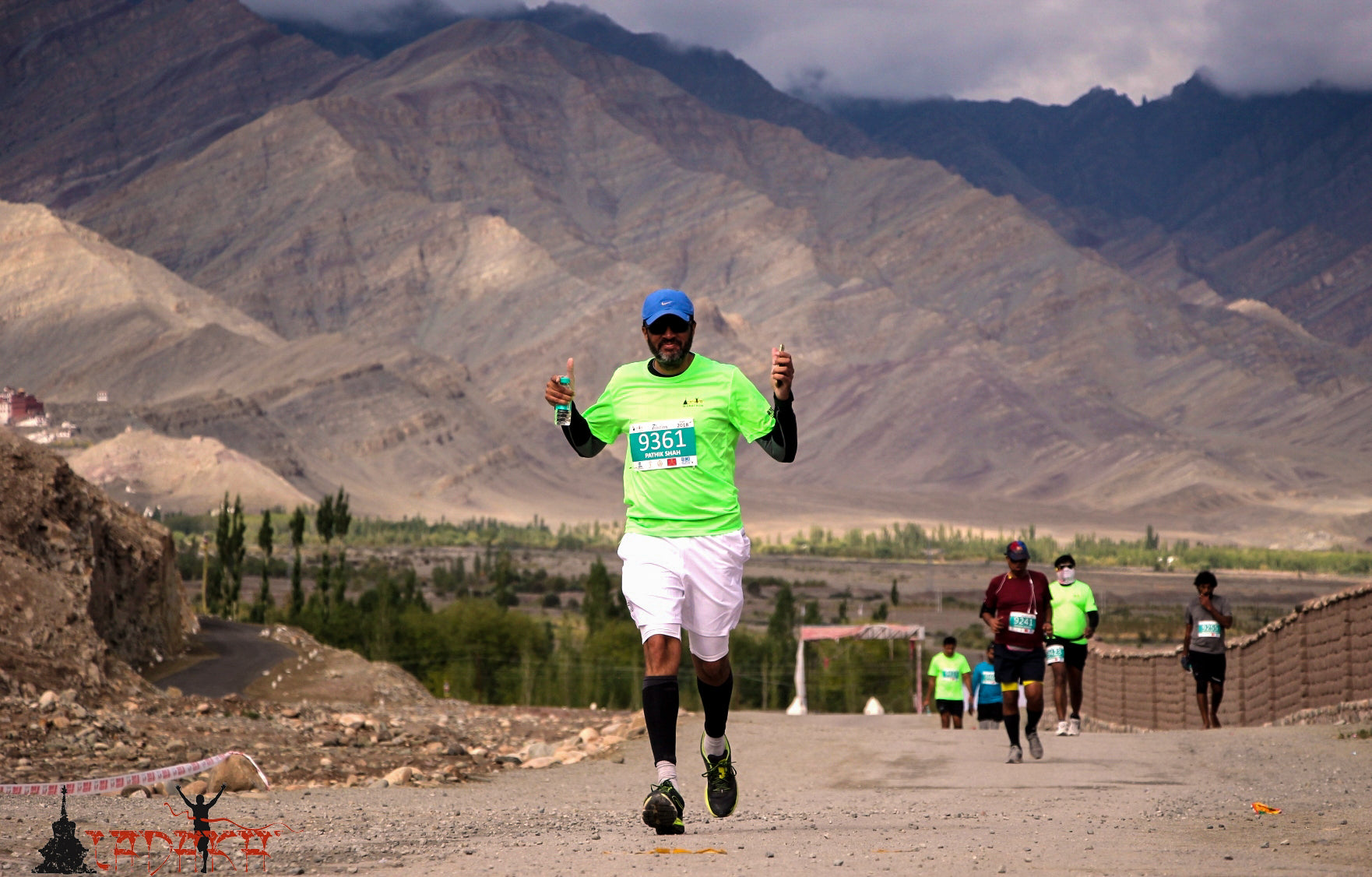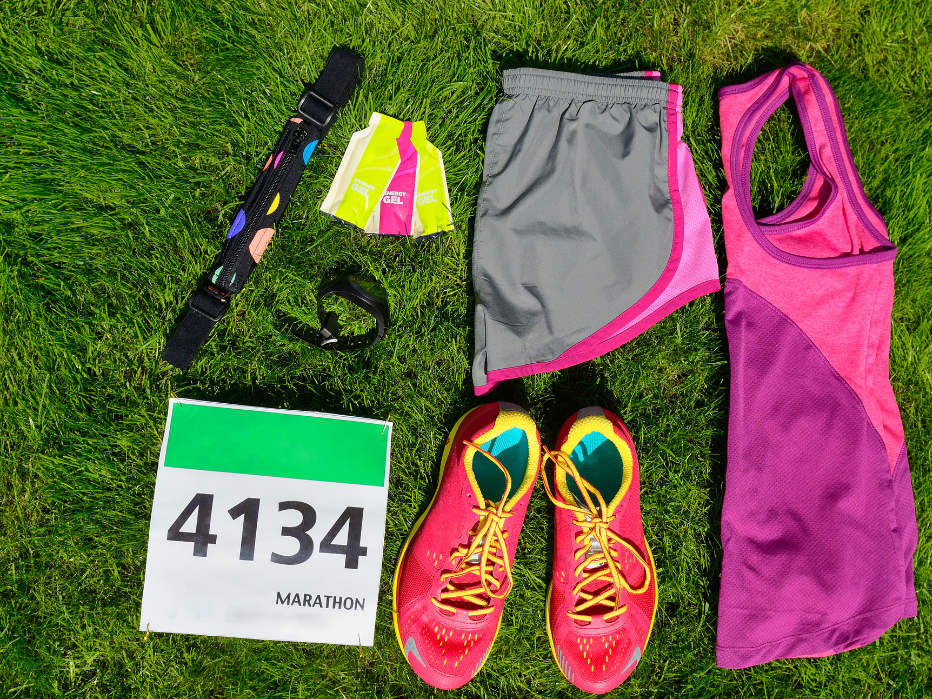Running at high altitudes: A Pro’s experience at the Ladakh Marathon
Date
Duration
4 min read


When Pathik Shah first heard of the Ladakh Marathon, his preparation for this high-performance oriented run had already been underway. He just didn’t know it until he found himself running across the finish line in Ladakh. Ladakh, which is a sparsely populated region in the Northernmost Indian state of Jammu and Kashmir, is home to steepest parts of The Himalayan mountain range. Ladakh is also host to the highest and one of the toughest marathons in the world. The fact that despite participation by reputed runners from across the world, only those who are localized to the conditions have been able to win the marathon so far, exemplifies how difficult the preparation can be.
Pathik, who has been a long-time patron of TrueRevo’s Smart Phone Shorts (SPS) was clad in the double layered Polyester shorts when he got through the last 5 km stretch of the race, teary eyed. As he puts it, “This race was 80% mental and 20% physical. I had started preparing for it six months earlier.” The veteran who’s featured in almost all major marathons across the country was put to his ultimate test and describes the painstaking process of overcoming physical, social and strategic factors. Here are the factors that Pathik deems vital for a runner’s success at the Ladakh Marathon:
- Grab yourself the perfect gear:
“It is very important to have all the right equipment. Sunglasses are a must. The sun in the thin mountain atmosphere will be glaring right at you and the sunburns can happen almost instantaneously. So, you must have the right glasses. T-shirts are fine once your body has heated up, otherwise you should go for a comfortable jacket. Smart Phone Shorts (SPS) came in particularly handy, because an arm band becomes unbearable on such runs. A sturdy back pocket is a godsend.”, said Pathik when asked about essential gear.
- Acclimatize, Acclimatize, Acclimatize
“Acclimatizing the body to lower levels of oxygen is the most important step once you get there. As runners, we are always active and performance oriented, but the sudden drop in oxygen levels from 97% to 80% can prove to be deadly for a runner if not carefully considered.”, said Pathik. After three days of gradual acclimatization in Leh, the runners can bring up their body’s oxygen levels up to 88-89%.
Habituating yourself to Leh at least a week before the race begins is imperative. If you can get there 2 weeks prior to the event, that would be splendid. A runner must try and intake nutrients which improve the red-blood cell count. These include Spinach, beef, organ meat, kale, prunes, etc. The locals are often found swearing by rabbit meat to keep your body warm and red-blood count, high. Diuretic acids aid the process of acclimatization considerably. It is also important to keep yourself hydrated so drink plenty of water, soups and avoid alcohol while during the acclimatization period.
- A sound strategy is what will give you the edge
Pathik believes that the hardest part of the marathon was not the bone-chilling cold, lack of ethereal O2, or the jittery nerves. The hardest part was all the strategizing that went into the marathon. “Almost everyone who shows up at the Ladakh marathon is a strong runner; they are usually stronger runners than I am or at least as strong, but those who aren’t able to complete the run are the ones who lack strategy.” Pathik and his peers spent hours imprinting every single nitty-gritty of the route into their heads. It was pivotal that he exerted himself just the right amount at just the right place, taking into consideration the altitude, hydration points, and terrain. On one of the most beautiful routes he’s ever been on, Pathik got tremendous support from the local crowds, organizing staff and the cute furry mountain dogs who accompanied and cheered on the runners.
While nothing can be better than preparing on the sharp Himalayan climbs, you can begin practicing for the track back home as well. To do so, one must chart the grades of the uphill and downhill climbs of the route and the simulate the grades in the gym or on suitable landscapes near home. This is a strategy employed by most professional runners while preparing for high-altitude runs.
- Be mentally prepared
A strange situation that Pathik was confronted with, was the hesitation of his well-wishers to let him take up the Ladakh Marathon. The marathon was considered by many, “too risky”. His, doctor, family members and friends, had all advised him against taking up this ordeal, fearing for his health and well-being. “All this had made me a little nervous. I took a selfie at the 21 km mark so that in case I don’t finish the race, I can at least say that I completed the half marathon.”, said Pathik who had certainly humoured the strange situation he was in. Although a marathon at 4000 metres above sea level is seriously not something to be humoured about.
Be prepared to take on the challenge and do not let the noise in.
What we can surmise from Pathik’s description and the pictures we’ve seen is that the Ladakh marathon is one for the ages and will remain etched in the memories of those who dare take up this beastly (yet, tranquil) challenge.






